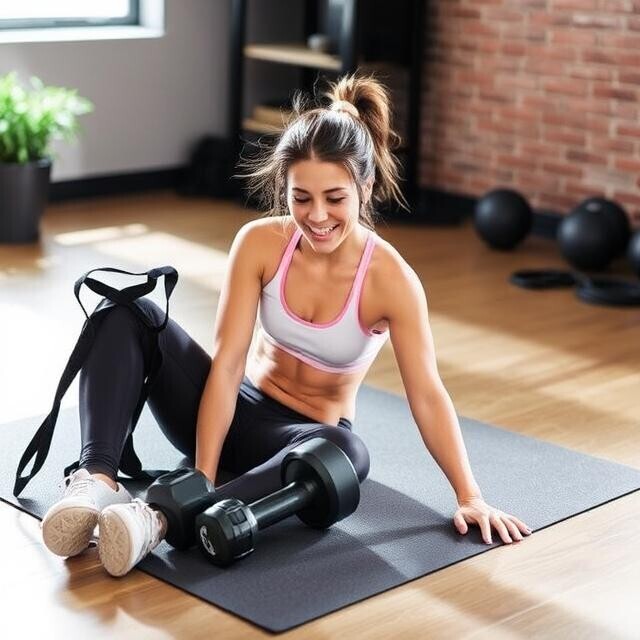
Workout routines for different training goals.
Exercise is important to all aspects of our lives, especially when it comes to Workout routines for different training goals. This is the best way to ensure all of our fitness targets and goals are achieved.
Workout Routines For Different Training Goals
When creating workout routines tailored to different fitness objectives, it’s essential to understand how each training method can help you achieve your specific goals. Whether you’re aiming for hypertrophy, fat loss, endurance, or flexibility, the right combination of exercises and principles is crucial for success.
Let’s explore various workout routines designed for these distinct training goals and how to effectively implement them into your fitness regimen.

Hypertrophy
Building Muscle Mass Through Strength Training
Focusing on hypertrophy, or muscle growth, is essential when aiming to build muscle mass. Hypertrophy involves increasing the size of muscle fibres through strength training. Incorporating certain exercises and training principles can help achieve this goal.
Compound exercises should be the foundation of any muscle-building workout routine. These exercises involve multiple joints and muscle groups, making them highly effective for stimulating overall muscle growth.
Key compound exercises to include are squats, deadlifts, bench presses, and pull-ups. These movements not only recruit a large number of muscle fibres but also promote the release of muscle-building hormones, like testosterone and growth hormone.
Progressive overload is a crucial concept in muscle growth. It means gradually increasing the weight, frequency, or number of repetitions in your strength training routine. This constant challenge forces muscles to adapt and grow over time. Without progressive overload, muscles can quickly plateau, which stalls progress.
Nutrition and rest are equally important in the muscle-building process. Muscle growth happens not only during workouts but also during recovery periods. Consuming a diet rich in protein, healthy fats, and complex carbohydrates provides the necessary building blocks for muscle repair and growth.
Additionally, ensuring adequate sleep and rest days allows muscles to recover and grow stronger.
Sample Workout Routine for Hypertrophy:
- 1: Chest and Triceps – Bench Press, Incline Dumbbell Press, Cable Flyes, Tricep Dips, Skull Crushers
- Day 2: Back and Biceps – Deadlifts, Pull-Ups, Bent-Over Rows, Bicep Curls, Hammer Curls
- Day 3: Legs and Shoulders – Squats, Lunges, Leg Press, Shoulder Press, Lateral Raises
Workout Routines For Different Training Goals – Effective Fat Loss
Optimal Cardio and Resistance Training Strategies
Understanding the science behind fat loss is the first step to achieving your goals. Fat loss occurs when you consistently maintain a calorie deficit, meaning you burn more calories than you consume. This can be achieved through a combination of dietary adjustments and increased physical activity.
A balanced approach to fat loss combines both cardio and resistance training. Cardiovascular exercises, such as running, cycling, and swimming, help burn calories and improve heart health.
On the other hand, resistance training, including weight lifting and bodyweight exercises, builds muscle. More muscle mass increases your resting metabolic rate, allowing you to burn more calories even at rest.
High-Intensity Interval Training (HIIT) is particularly effective for fat loss. HIIT involves short bursts of intense activity followed by periods of rest or lower-intensity exercise. This method has been shown to burn more fat in less time compared to steady-state cardio, making it a great option for those with a busy schedule.
Diet and lifestyle choices significantly impact the fat loss journey. Consuming nutrient-dense foods, staying hydrated, and getting enough sleep can aid in weight loss. Reducing processed foods and sugars while increasing the intake of vegetables, lean proteins, and whole grains can support your goals.

Sample Fat Loss Workout Plan:
- Cardio: 3-4 days a week of mixed steady-state cardio (like jogging) and HIIT (like sprint intervals).
- Resistance Training: 2-3 days a week focusing on full-body workouts using compound movements such as squats, lunges, push-ups, and rows.
Workout Routines For Different Training Goals
Enhancing Endurance
Focusing on endurance training improves your stamina and overall performance in various sports or daily activities. The key is to understand and implement both aerobic and anaerobic exercises into your routine.
Aerobic exercises are those sustained over longer periods, relying on oxygen to produce energy. Activities like running, swimming, and cycling fall under this category. These exercises enhance your cardiovascular health, making the heart and lungs more efficient at delivering oxygen to muscles. Aerobic training is crucial because it forms the backbone of endurance.
Incorporating anaerobic exercises is equally important. These are short, intense bursts of physical activity, such as sprinting or high-intensity interval training (HIIT).
Unlike aerobic exercises, they don’t rely on oxygen as a primary energy source but instead on energy stored within muscles. This type of training can improve overall athletic performance, increase speed, and build resilience against fatigue.
Cross-training is an effective way to boost endurance. By engaging in various types of exercises, such as swimming, cycling, and running, you can enhance different muscle groups and prevent injuries. It keeps workouts interesting, ensuring that no single muscle group gets overworked, while the others are neglected.
Nutrition and hydration play a critical role in improving endurance. Consuming a balanced diet rich in carbohydrates, proteins, and fats fuels your body for prolonged activities. Carbohydrates, in particular, are the primary energy source for endurance workouts.
Staying hydrated ensures that your muscles perform optimally and reduces the risk of cramps and fatigue.
Sample Endurance Training Program:
- Running: Alternate between long, steady runs and shorter, faster sprints.
- Cycling: Mix long rides with hill intervals.
- Swimming: Include continuous laps combined with sprint sets.
Improving Flexibility and Mobility
Stretching and Functional Training
Flexibility and mobility are often overlooked, but they’re essential for overall health and performance. Flexibility refers to the ability of muscles to stretch, while mobility is about the range of motion in joints. Working on both can prevent injuries and improve daily functioning.
Key stretching exercises target various muscle groups and enhance flexibility. Incorporating stretches for hamstrings, quadriceps, calves, shoulders, and back can help maintain balance and symmetry. Hold each stretch for at least 30 seconds, and remember to breathe deeply to assist in muscle relaxation.
Yoga and Pilates are excellent for improving mobility. Both practices emphasize controlled movements, strength, and flexibility. They not only stretch muscles but also strengthen the core and stabilizing muscles, promoting better overall movement patterns.
Functional training focuses on exercises that mimic everyday movements. These exercises, like squats, lunges, and push-ups, improve the body’s ability to perform daily tasks. Adding tools like resistance bands, stability balls, and kettlebells can make these workouts more effective.
Sample Flexibility and Mobility Workout Plan:
- Warm-Up: Start with light aerobic activity and dynamic stretches such as arm circles and leg swings.
- Yoga/Pilates Sessions: Include 2-3 sessions per week to enhance flexibility and mobility.
- Functional Exercises: Integrate squats, lunges, push-ups, and core exercises with stability tools.

The Conclusion To Workout Routines For Different Training Goals
When deciding on a workout routine, it’s crucial to align your workouts with your specific training goals, whether it’s building muscle, losing fat, improving endurance, or increasing flexibility and mobility.
Each goal requires a unique combination of exercises and principles to be most effective. Always remember to listen to your body, adjust as needed, and maintain a balanced approach to avoid overtraining and injury.
All your comments and questions in relation to Workout routines for different training goals are welcome.
Ultimate Training Gear.





